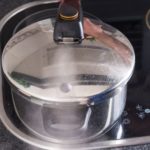Pressure cookers are a modern cook’s best friend, offering a quick and nutritious way to prepare meals. However, with two types of pressure cookers available – manual and electric – it’s important to understand how to safely release the pressure, including the crucial step of venting. Read on to discover the correct venting methods for both types of pressure cookers.
1 Venting Methods for Manual Pressure Cookers
Quick Release
Ideal for quick-cooking and tenderizing foods like vegetables and seafood. This is the fastest way to release pressure by venting steam through the valve. It only takes 2-3 minutes to safely release the pressure.
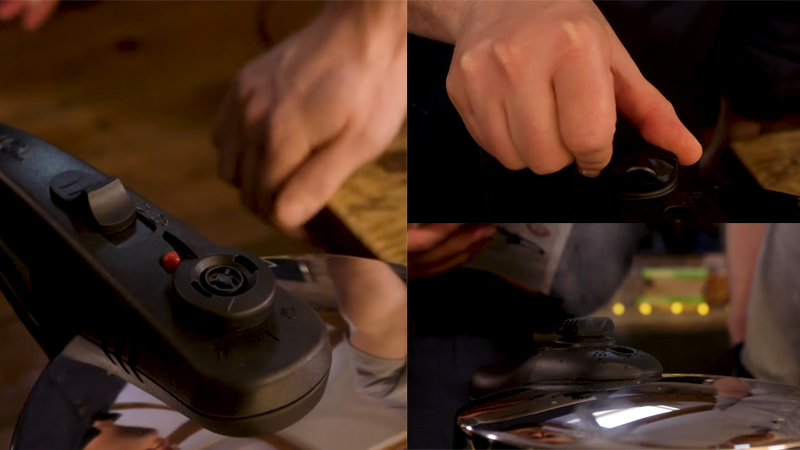 Simply pull the valve with your hand and wait for 2-3 minutes
Simply pull the valve with your hand and wait for 2-3 minutes
Slow Release
This method is suitable for foods that require longer cooking times, such as stews and braises. The process is similar to the quick release, but it takes longer, around 5 – 10 minutes.
 Release the steam in intervals, locking the valve every 10 seconds to prevent foam from spilling out.
Release the steam in intervals, locking the valve every 10 seconds to prevent foam from spilling out.
Natural Release for 10 Minutes
Perfect for foods that need to be cooked and softened with steam, like cereals and grains. Turn off the heat source and let the pot cool down for 10-15 minutes, then proceed with a slow release to safely vent the pressure.
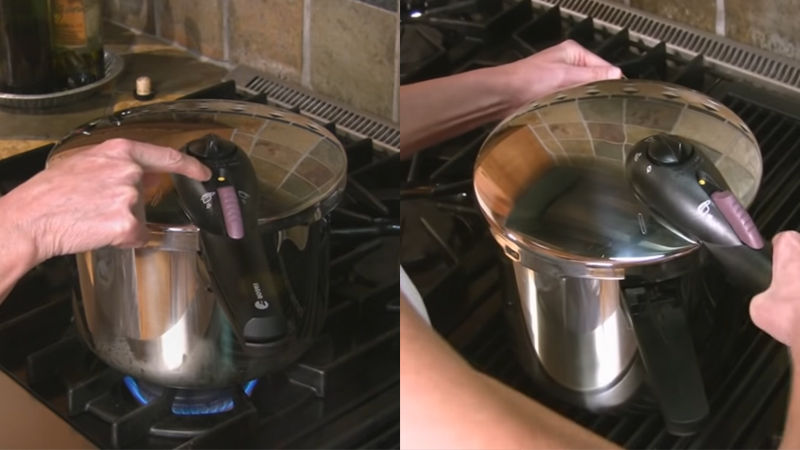 This method is highly safe
This method is highly safe
Natural Release
This is an extremely safe method for clumsy cooks – simply turn off the heat and let the pot cool down naturally. However, it can take a significant amount of time, depending on the amount of food and the desired level of doneness. It is often used for dishes that require simmering or braising, such as bones, meat, and broths, as these tend to foam.
Cold Water Release
This method is typically used for manual pressure cookers and is similar to the natural release method. It is suitable for quickly cooking vegetables and roots.
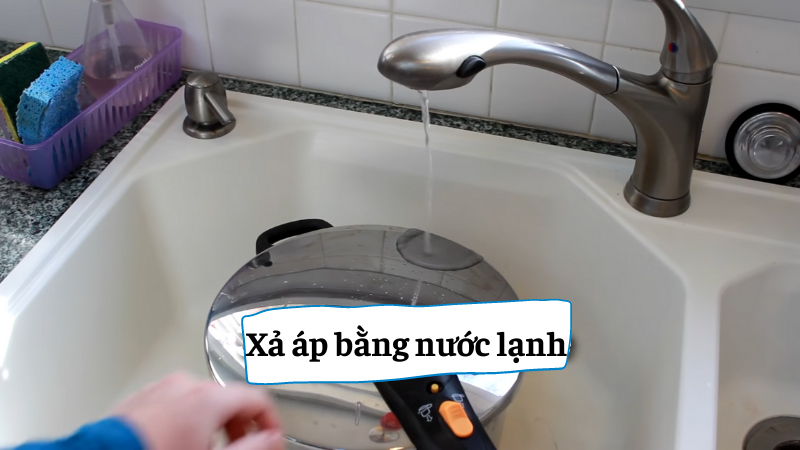 Cold Water Release Method
Cold Water Release Method
Place the pressure cooker in a sink, tilt it at an angle, and let cold water flow over the outer rim of the lid without letting it flow directly into the vent or valve.
2 Venting Methods for Electric Pressure Cookers
These cookers are more convenient as they feature buttons and automatic settings. The process can be summarized in three simple steps:
Step 1: When the timer goes off, an alarm will sound, and the cooker will automatically switch to keep-warm mode.
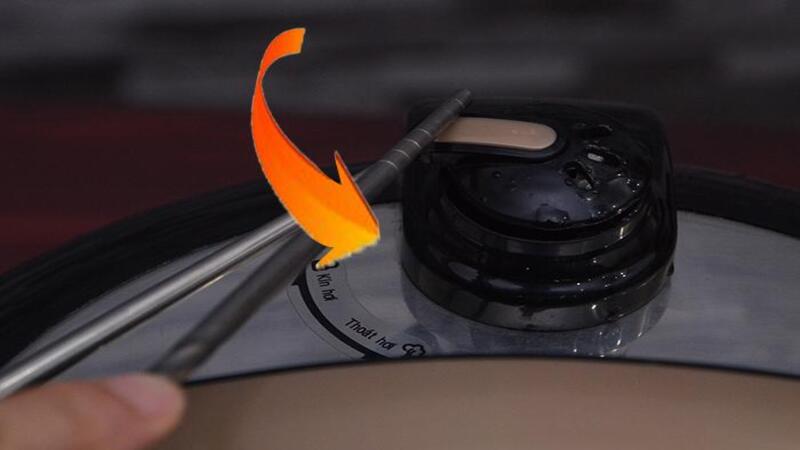 Use chopsticks to turn the vent to the unlock position
Use chopsticks to turn the vent to the unlock position
Step 2: Use chopsticks to turn the vent to the unlock position (venting steam).
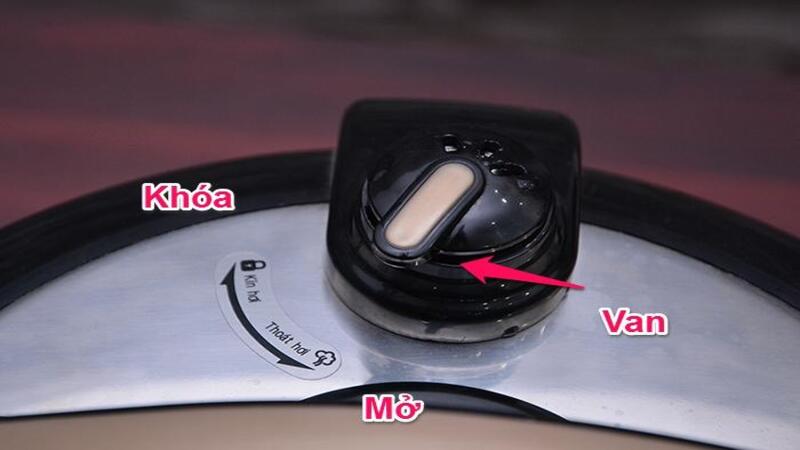 Wait for the pot to cool down, then open the lid and enjoy your meal
Wait for the pot to cool down, then open the lid and enjoy your meal
Step 3: As the steam escapes, wait for the pot to cool down and the pressure to drop. In just 2 to 3 minutes, you’ll be able to open the lid and enjoy your delicious meal!
These are safe venting methods for both manual and electric pressure cookers. Stay tuned to for more helpful tips and tricks.
Cook the Perfect Carrot Soup for Babies That Moms Will Love – Ready in No Time!
The recently released GREEN Electric Machine pressure cooker will help mothers cook carrot soup and provide their children with the nutrients they need to keep their eyes healthy. The pressure cooker will make it easier to whip up this nutritious snack that can provide kids with vitamin A supplements for improved vision.
The GREEN Electric Machine pressure cooker has just been unveiled, providing mothers with a convenient way to prepare carrot soup for their children. This healthful snack can give kids the vitamin A supplements they need to prevent eye diseases, promote healthy eyesight, and enjoy a delicious meal.





























